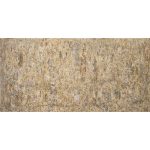Introduction
Stone veneer has become a popular choice for homeowners looking to enhance the appearance of their homes. With its natural beauty and durability, stone veneer offers a cost-effective alternative to traditional stone masonry while providing a similar aesthetic appeal. In this comprehensive guide, we will explore the various factors that influence the cost of stone veneer, including materials, installation, and maintenance.
Understanding Stone Veneer
Stone veneer is a thin layer of natural or manufactured stone that is installed over existing surfaces, such as walls, fireplaces, or outdoor structures. It is designed to mimic the look of traditional stone masonry while offering several advantages, including lighter weight, easier installation, and lower cost. Stone veneer comes in a variety of colors, textures, and shapes, allowing homeowners to achieve the desired aesthetic for their home.
Factors Affecting Stone Veneer Cost
The cost of stone veneer can vary widely depending on several factors. Some of the key factors that influence the cost of stone veneer include:
1. Type of Stone: The type of stone used for the veneer will have a significant impact on the overall cost. Natural stone veneer, such as granite, limestone, or slate, tends to be more expensive than manufactured stone veneer, which is made from concrete or other synthetic materials.
2. Quality of Stone: The quality of the stone veneer will also affect the cost. Higher-quality stones that are more durable and aesthetically pleasing will generally be more expensive than lower-quality stones.
3. Size and Thickness: The size and thickness of the stone veneer panels will impact the cost of materials. Larger panels or thicker stones will require more material and may be more costly to purchase.

4. Installation Complexity: The complexity of the installation process will also influence the cost of stone veneer. ledgestone sale as the surface to be covered, the need for additional structural support, and the accessibility of the installation site can all affect the overall cost.
5. Labor Costs: The cost of labor for installing stone veneer can vary depending on the region, the experience of the installer, and the scope of the project. Labor costs are typically calculated based on the square footage of the area to be covered.
6. Additional Materials: In addition to the stone veneer panels, there may be other materials required for the installation, such as mortar, adhesive, sealant, and tools. These additional materials will add to the overall cost of the project.
7. Location: The cost of stone veneer can also be influenced by the location of the project. Prices may vary depending on factors such as local labor rates, transportation costs, and availability of materials.
Calculating Stone Veneer Cost
To calculate the cost of stone veneer for your project, you will need to consider the following:
1. Measure the Area: Begin by measuring the area to be covered with stone veneer in square feet. This will help you determine how much material you will need to purchase.
2. Choose the Type of Stone: Decide whether you want to use natural stone or manufactured stone veneer for your project. Consider the cost and aesthetics of each option before making a decision.
3. Obtain Quotes: Get quotes from several stone veneer suppliers and installation contractors to compare prices. Be sure to inquire about the cost of materials, labor, and any additional expenses.
4. Calculate Total Cost: Once you have gathered all the necessary information, you can calculate the total cost of the project by adding up the cost of materials, labor, and any other expenses.
Installation Process
The installation of stone veneer typically involves the following steps:
1. Surface Preparation: The surface to be covered with stone veneer must be clean, dry, and free of debris. Any existing finishes or coatings may need to be removed to ensure proper adhesion of the veneer.
2. Application of Adhesive: A suitable adhesive or mortar is applied to the back of the stone veneer panels before they are placed on the surface. The adhesive should be spread evenly to create a strong bond.
3. Placement of Panels: The stone veneer panels are carefully placed on the surface, ensuring proper alignment and spacing between each panel. A level is used to check for straightness and uniformity.
4. Grouting and Sealing: Once the panels are in place, grout may be applied between the joints to fill in any gaps and enhance the appearance of the installation. A sealant is then applied to protect the stone veneer from moisture and staining.
Maintenance of Stone Veneer
To ensure the longevity and beauty of your stone veneer, regular maintenance is essential. Some tips for maintaining stone veneer include:
1. Cleaning: Periodically clean the stone veneer with a mild detergent and water to remove dirt, dust, and other debris. Avoid using harsh chemicals or abrasive cleaners, as these can damage the stone.
2. Sealing: Apply a sealant to the stone veneer every few years to protect it from moisture, stains, and fading. Be sure to follow the manufacturer's instructions for the proper application of the sealant.
3. Inspections: Inspect the stone veneer regularly for any signs of damage, such as cracks, chips, or loose panels. Address any issues promptly to prevent further damage.
4. Repairs: If repairs are needed, contact a professional stone veneer installer to assess the damage and recommend the appropriate course of action. Attempting to repair the stone veneer yourself can lead to further damage and costly repairs.
Conclusion
Stone veneer offers a cost-effective and aesthetically pleasing option for homeowners looking to enhance the appearance of their homes. By understanding the factors that influence the cost of stone veneer, calculating the total cost of a project, and following proper installation and maintenance practices, homeowners can enjoy the beauty and durability of stone veneer for years to come. Whether you choose natural stone or manufactured stone veneer, investing in this versatile material can add value and curb appeal to your home.
